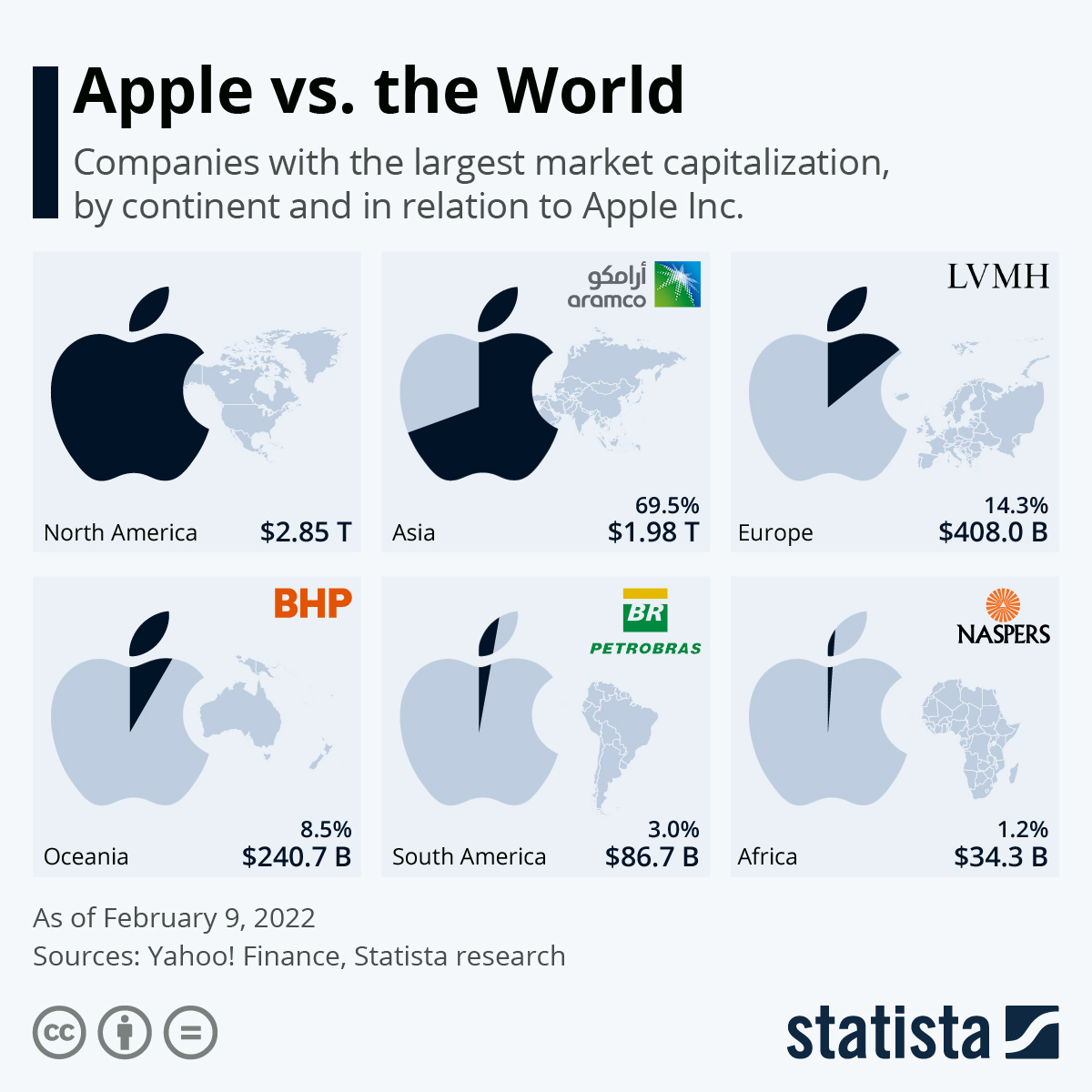Understanding The Market Cap Of Apple Inc: A Comprehensive Analysis
When it comes to the world of technology and finance, few companies have made as significant an impact as Apple Inc. Its market cap has become a hot topic among investors and analysts alike, reflecting not only the company's financial health but also its influence on the global economy. In this article, we will dive deep into the market capitalization of Apple Inc, exploring how it is calculated, its historical trends, and its implications for investors and the tech industry as a whole. Whether you're a seasoned investor or just starting to explore the stock market, understanding Apple's market cap is crucial in making informed decisions.
Apple Inc, known for its innovative products like the iPhone, iPad, and Mac, has positioned itself as a leader in the tech industry. Its market cap, which represents the total market value of its outstanding shares, is a key indicator of its size and profitability. As of 2023, Apple consistently ranks among the most valuable companies in the world, often competing for the top spot with other tech giants.
In this article, we will break down the concept of market capitalization, examine Apple's growth over the years, and discuss what this means for potential investors and stakeholders. By the end of this article, you will have a clearer understanding of how market cap functions and why it is particularly important in the context of Apple Inc.
Table of Contents
- What is Market Cap?
- How is Market Cap Calculated?
- Historical Market Cap Trends of Apple Inc
- Impact of Market Cap on Investors
- Current Market Cap of Apple Inc
- Factors Influencing the Market Cap of Apple
- The Future of Apple Inc's Market Cap
- Conclusion
What is Market Cap?
Market capitalization, often referred to as market cap, is a financial metric that represents the total value of a company's outstanding shares of stock. It is calculated by multiplying the current share price by the total number of outstanding shares. Market cap is an important indicator of a company's size, stability, and growth potential.
Types of Market Cap
- Large Cap: Companies with a market cap of $10 billion or more are considered large-cap companies, like Apple Inc.
- Mid Cap: Companies with a market cap between $2 billion and $10 billion.
- Small Cap: Companies with a market cap of less than $2 billion.
How is Market Cap Calculated?
The formula for calculating market cap is straightforward:
Market Cap = Current Share Price x Total Outstanding Shares
For example, if Apple Inc has 16 billion outstanding shares and the current share price is $150, its market cap would be:
Market Cap = $150 x 16,000,000,000 = $2.4 trillion
Historical Market Cap Trends of Apple Inc
Apple Inc’s market cap has experienced remarkable growth since its inception. Below is a brief overview of its market cap over the years:
- 2010: $200 billion
- 2015: $700 billion
- 2020: $2 trillion
- 2023: Over $2.4 trillion
This growth trajectory can be attributed to several factors, including successful product launches, expansion into new markets, and consistent revenue growth.
Impact of Market Cap on Investors
Understanding market capitalization is vital for investors as it helps them assess a company's risk and growth potential. Here are some key impacts:
- Investors often view large-cap companies like Apple as safer investments due to their established market presence and financial stability.
- Market cap can influence investment strategies; for instance, growth investors may focus more on mid and small-cap companies for higher returns.
- Market cap affects liquidity; larger companies tend to have more liquidity, making it easier for investors to buy and sell shares.
Current Market Cap of Apple Inc
As of October 2023, Apple's market cap stands at approximately $2.4 trillion, making it one of the most valuable companies globally. This valuation is a reflection of its robust business model, strong brand loyalty, and innovative product lineup.
Factors Influencing the Market Cap of Apple
Several factors contribute to the fluctuations in Apple’s market cap, including:
1. Product Launches
New product releases, such as the latest iPhone or Mac models, can significantly impact the stock price and, consequently, the market cap.
2. Economic Conditions
Macroeconomic factors, including interest rates, inflation, and consumer spending, play a crucial role in determining the stock market's overall performance.
3. Competition
Competitive pressures from other tech giants can influence investor perceptions and stock values, affecting Apple’s market cap.
4. Investor Sentiment
Market reactions to news, earnings reports, and analyst ratings can lead to fluctuations in share prices and market cap.
The Future of Apple Inc's Market Cap
Looking ahead, Apple Inc's market cap is expected to be influenced by its continued innovation, expansion into new markets such as augmented reality and electric vehicles, and its ability to maintain strong sales across its product lines. The company’s investments in services, such as Apple Music and iCloud, are also anticipated to contribute to revenue growth.
Conclusion
In summary, Apple Inc's market cap is a vital indicator of its financial health and market position. Understanding how market cap is calculated and the factors that influence it can help investors make informed decisions. As Apple continues to innovate and adapt to market changes, its market cap will likely remain a key topic of interest for investors and analysts alike.
We encourage you to share your thoughts in the comments below, explore other articles on our site, or share this article with anyone interested in learning more about market capitalization and Apple Inc.
Your engagement helps us provide more valuable content, so thank you for reading!
Watch The Accountant: A Deep Dive Into The Film's Intricacies And Impact
Stand By Me Filming: A Journey Through The Iconic Locations
Understanding FTEK Stock: An In-Depth Analysis


